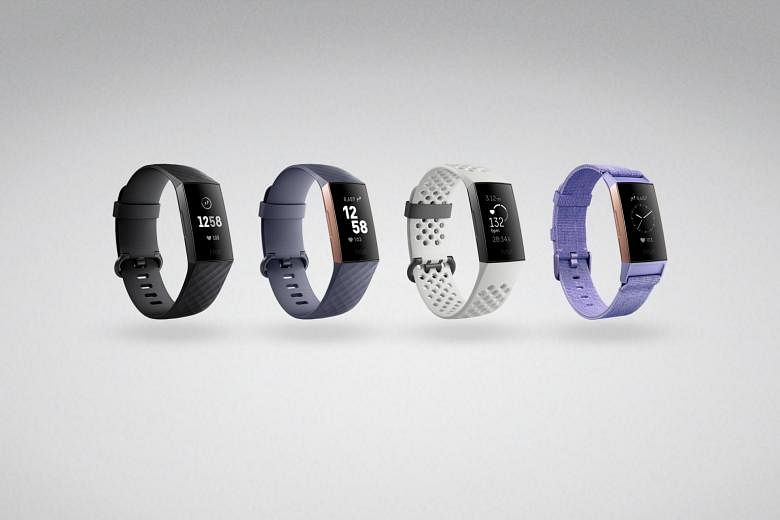The Charge 3 is the most advanced fitness tracker in the market, according to Fitbit. It succeeds the critically acclaimed Charge 2 that was launched in 2016 and comes with plenty of improvements.
The touchscreen display is around 40 per cent larger. It weighs 7g less by using aerospace-grade aluminium for its case and buckle (the Charge 2 has a stainless steel case).
It also loses the sole physical button of its predecessor, with an inductive button on its left instead.
This allows for better waterproofing. The Charge 3 is water resistant to a depth of 50m. You can swim with it, unlike the Charge 2 which is only splash- and rain-resistant.
The Charge 3 comes in many case colour and band combinations. I reviewed the special edition graphite case version (with Fitbit Pay support) with the white sport band. The sport band has grilled holes, allowing for plenty of breathability and is very comfortable to wear.
The Charge 3 monitors daily physical activities, logging fitness information such as steps taken, calories burnt, stairs climbed and heart rate.
It automatically recognises different exercises such as runs, walks and swims, and tracks them accordingly.
-
SPECS
PRICE: $238 or $268 (Special Edition, version tested)
CONNECTIVITY: Bluetooth, Near Field Communication (Special Edition only)
WATER RESISTANCE: 50m
WEIGHT: 29g
RATING
FEATURES: 4/5
DESIGN: 4/5
PERFORMANCE: 4/5
BATTERY LIFE: 5/5
VALUE FOR MONEY: 4/5
OVERALL: 4/5 [ST Tech Editor's Choice]
The automatic tracking works as advertised, as long as you do an activity for at least 10 minutes.
My walks and runs were accurately tracked while the Charge 3 is connected to my iPhone. As the Charge 3 lacks built-in GPS, it uses the paired smartphone's GPS to track distance.
But when I ran without the paired smartphone, I found it added almost 1km to my usual 5km jogging route.
Getting it to automatically track a swim is more difficult, as you need to swim constantly for 10 minutes. At least it was a problem for me, as I am not a strong swimmer and usually need to take breaks between laps. The easier option is to use the Charge 3's Swim mode, whereby you set the pool length before starting the swim.
Once you are done with your swim, you can find the lap, distance and pace information in the Fitbit app. It tracked all my swim laps accurately.
The Charge 3 was very accurate in step tracking. My results differed by no more than 2 per cent from my calibrated Apple Watch Series 4. For heart rate monitoring, its measurements differed by only 3 or 4 beats per minute from my Apple Watch.
Sleep tracking continues to be excellent. It automatically tracks the amount of time you spend in light, deep and REM (rapid eye movement) sleep cycles, as well as the time you are awake.
While I have no way of knowing how accurately it has tracked my sleep cycles, I can say that it was very accurate in pinpointing the time I woke up to use the bathroom.
Battery life has improved to a week, from its predecesor's five days. But it continues to use a proprietary charging cable, which might be an issue if you forget to bring it along when you are travelling.
In addition, the Fitbit Pay contactless payment currently only supports OCBC and UOB banks. I did not test this feature as I don't have credit cards with both banks.
Verdict: Apart from lacking built-in GPS, the Fitbit Charge 3 is the almost-perfect fitness tracker.


